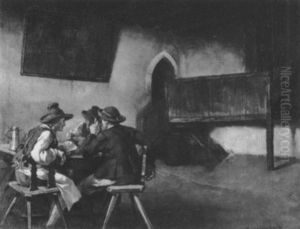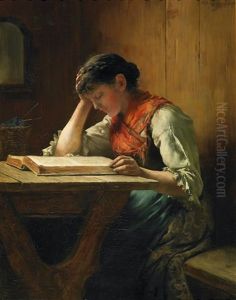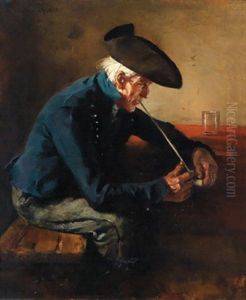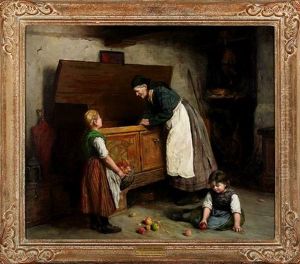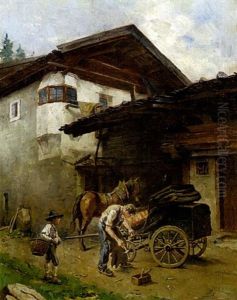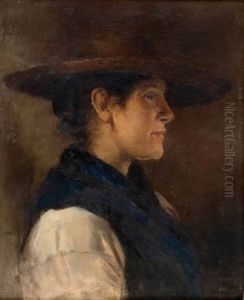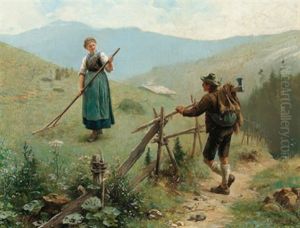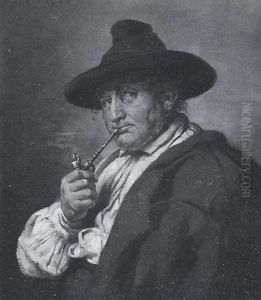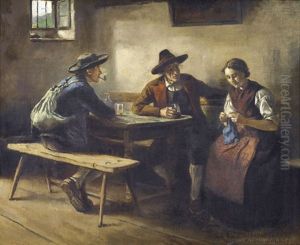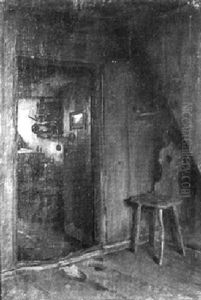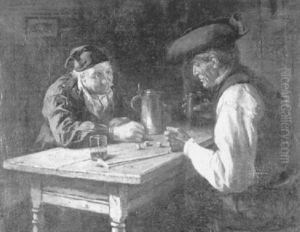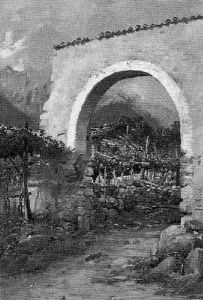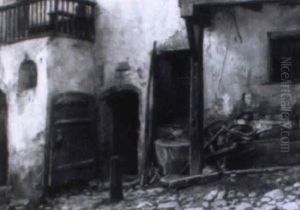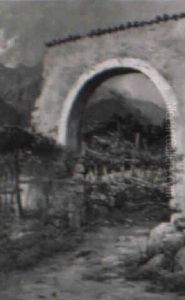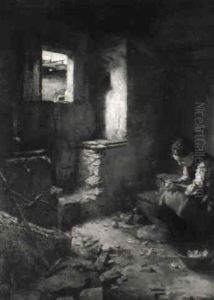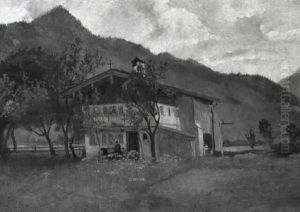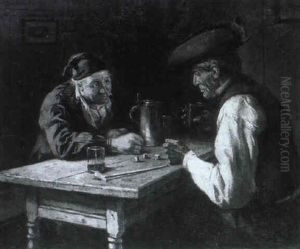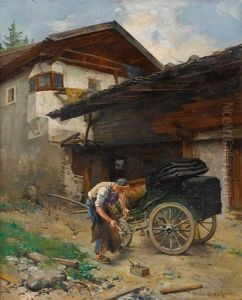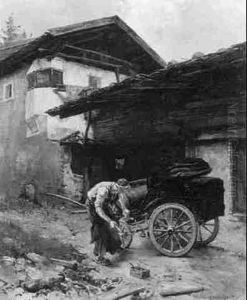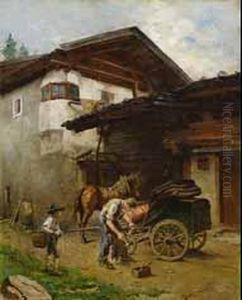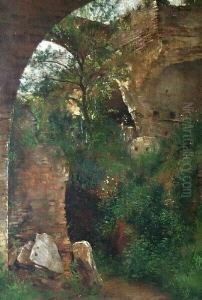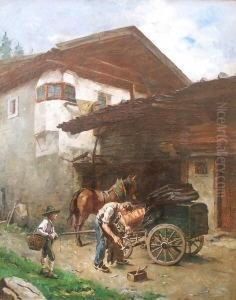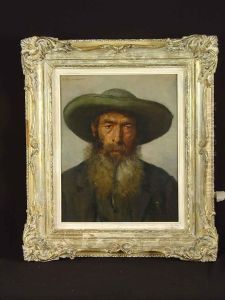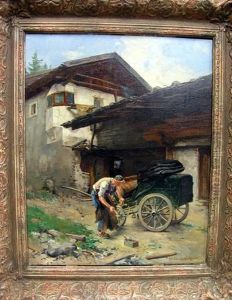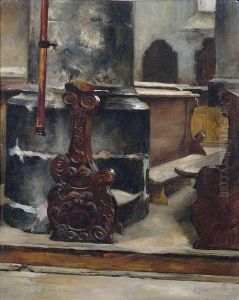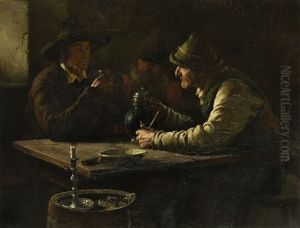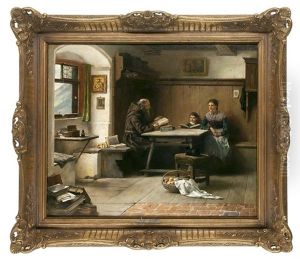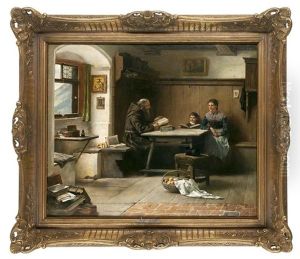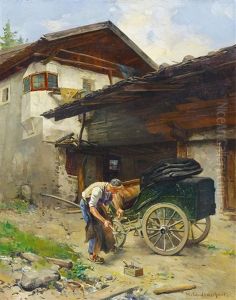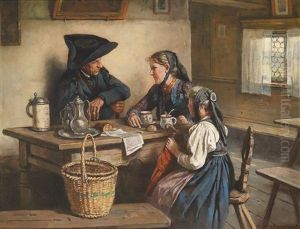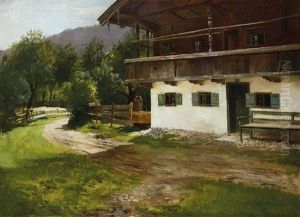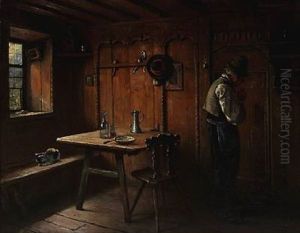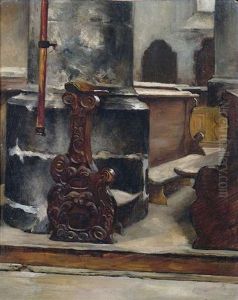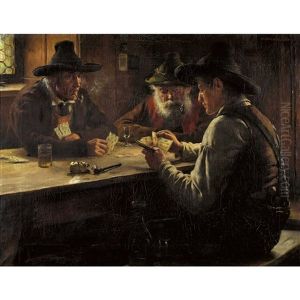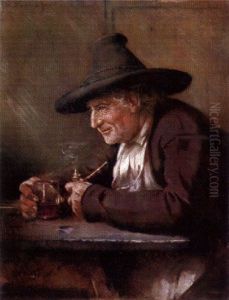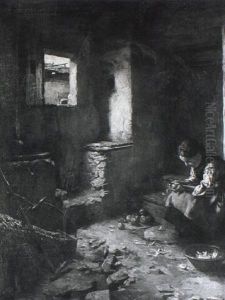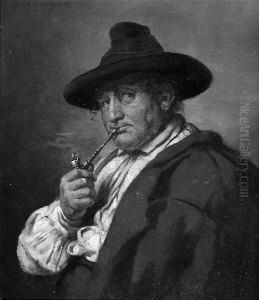Hermann Lindenschmit Paintings
Hermann Lindenschmit was a German painter and illustrator, born in 1823 in Mainz, Germany, and died in 1899. He was part of the 19th-century European art movement, contributing significantly to the genres of historical painting and illustration. Lindenschmit's work is characterized by its detailed historical accuracy and its vivid portrayal of scenes from German history and mythology.
Hermann Lindenschmit's early life was steeped in an environment conducive to nurturing his artistic talents. His father, Ludwig Lindenschmit the Elder, was also a painter, providing a strong artistic influence from a young age. This familial background in the arts paved the way for Hermann's future career and established a legacy of artistic achievement within the Lindenschmit family. He pursued formal art education, honing his skills in drawing, painting, and historical research, which later became the hallmark of his work.
Throughout his career, Lindenschmit was known for his commitment to historically accurate depictions of scenes from the past. His paintings often featured dramatic moments in German history, rendered with meticulous attention to detail in terms of costume, architecture, and setting. This dedication to accuracy made his works invaluable to historians and art lovers alike, offering a visual window into Germany's past.
Lindenschmit's contributions to the field of historical illustration were also significant. He illustrated numerous books on German history and folklore, bringing the stories to life with his detailed and evocative images. His illustrations were not only artistic achievements but also educational tools that helped popularize German history and mythology.
Despite his focus on the past, Lindenschmit's work resonated with the contemporary audiences of his time. His paintings and illustrations served as a source of national pride, highlighting the richness of German culture and history. His legacy continues to be appreciated by both art historians and the general public, for whom his works remain a valuable connection to Germany's historical and cultural heritage.
Hermann Lindenschmit's death in 1899 marked the end of a prolific career, but his body of work continues to be studied and admired. His contributions to the field of historical painting and illustration have secured his place in the annals of art history, ensuring that his name remains synonymous with the visual representation of German history.
